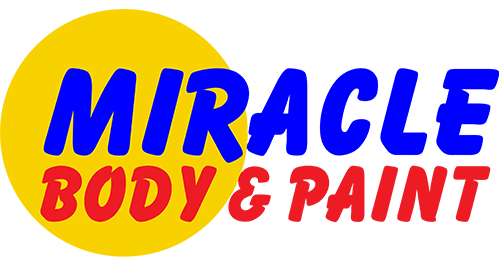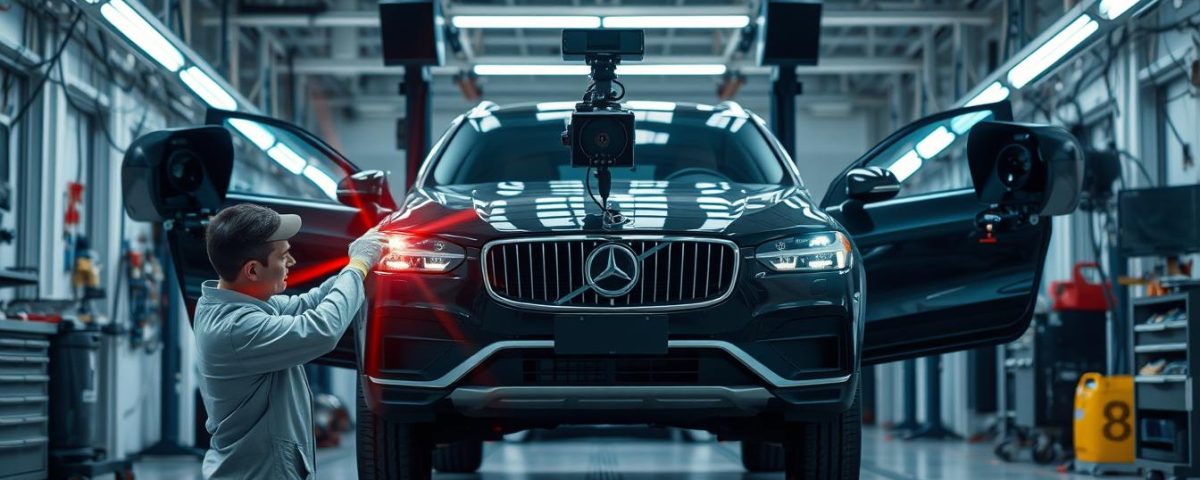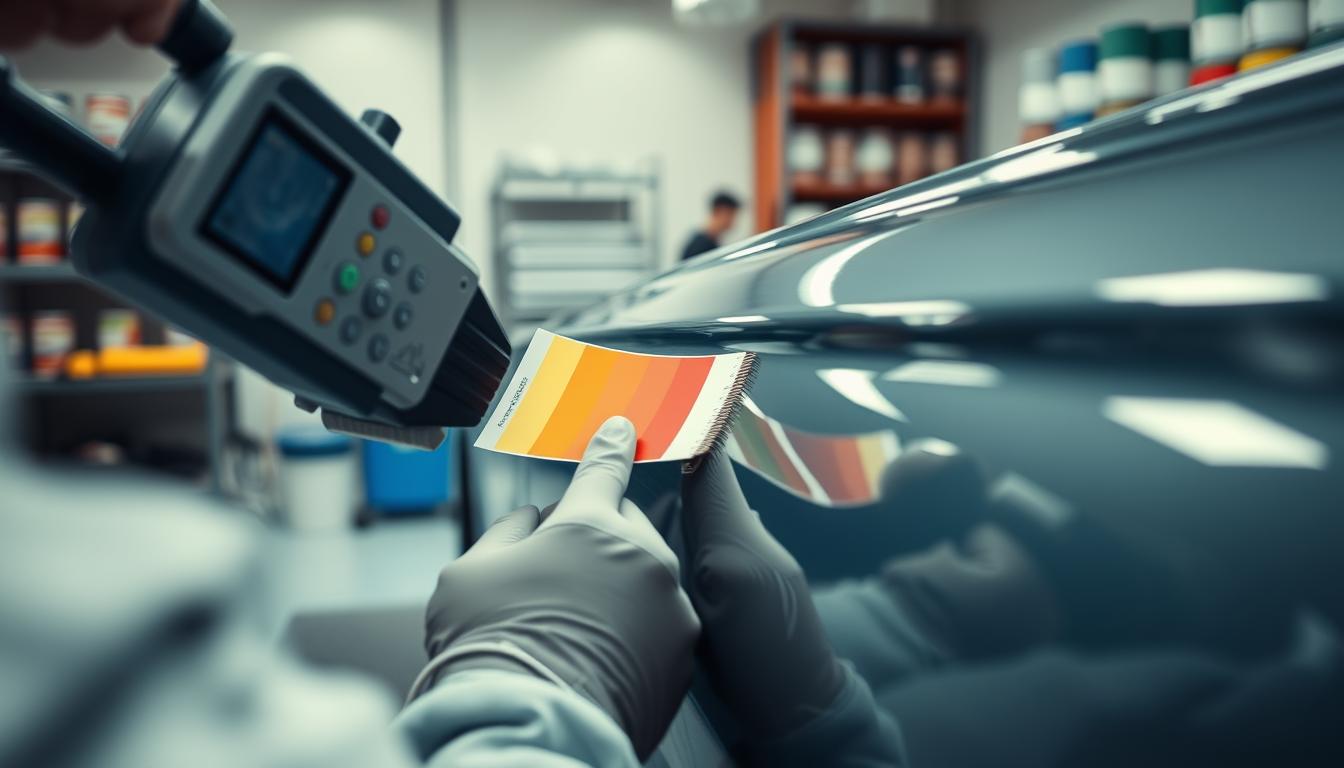
How Professional Paint Matching Restores Your Car’s Factory Look
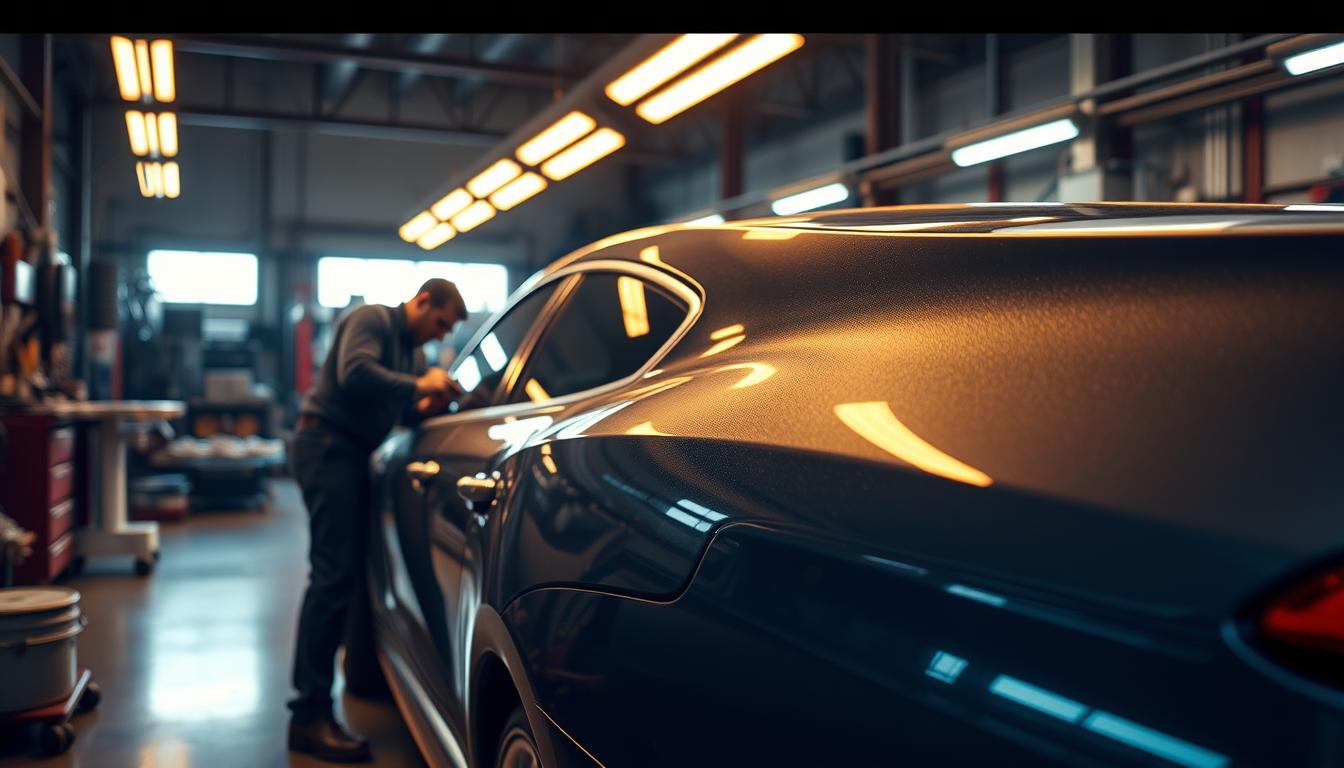
Paintless Dent Repair vs Traditional Methods: Which Is Right for You?
Modern vehicles are equipped with Advanced Driver Assistance Systems (ADAS) that rely on cameras and sensors, often mounted on the windshield. Proper alignment of these components is crucial for the safety features to function correctly.
At Miracle Body and Paint Collision Center in San Antonio, we understand that even a minor collision can disrupt the delicate calibration of these systems. If the windshield is replaced or repositioned, even slightly, it can cause ADAS to misinterpret road conditions, leading to potentially unsafe driving conditions.
We ensure that after any collision, our team performs precise ADAS calibration to restore your vehicle’s safety features to manufacturer specifications, providing you with a safe driving experience.
Key Takeaways
- Advanced Driver Assistance Systems (ADAS) are crucial for vehicle safety.
- A collision can disrupt the calibration of ADAS sensors and cameras.
- Proper ADAS calibration is essential after collision repairs.
- Incorrect calibration can lead to false alerts or failure to detect obstacles.
- Miracle Body and Paint Collision Center ensures precise ADAS calibration.
Understanding ADAS Technology
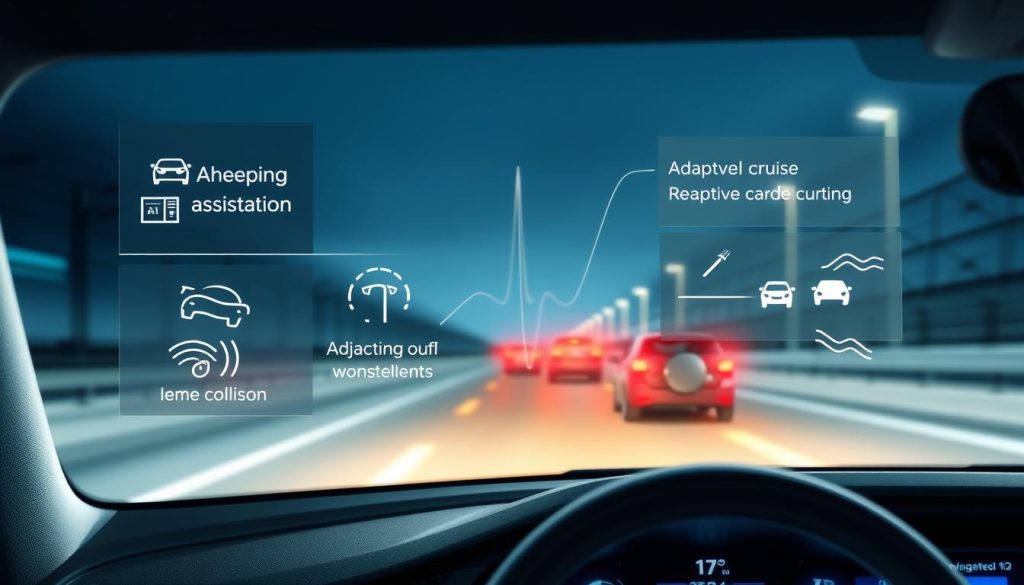
The integration of ADAS in vehicles marks a new era in road safety. At Drive Tech, we’re passionate about ADAS repair and vehicle safety, with over 30 years of collision industry experience.
What Are Advanced Driver Assistance Systems?
- Advanced Driver Assistance Systems (ADAS) represent cutting-edge automotive technology designed to enhance vehicle safety through automated features that assist drivers in various driving scenarios.
- These sophisticated systems utilize a network of sensors, cameras, radar, and computer processing to monitor the vehicle’s surroundings and provide real-time assistance to drivers.
- ADAS technology has evolved significantly, becoming standard in new vehicles across all price ranges.
Understanding how these complex systems work is essential for appreciating why proper calibration is critical after any collision or repair work that might affect sensor positioning or functionality.
The Importance of Proper ADAS Calibration
The importance of proper ADAS calibration cannot be overstated, as it directly impacts the safety of vehicle occupants and other road users. For this reason, ADAS calibration is often referred to as windshield calibration, as it involves fine-tuning the cameras and sensors attached to the windshield to ensure their accuracy.
Why Calibration Matters for Safety
Proper ADAS calibration ensures that all safety systems operate with pinpoint accuracy, allowing them to detect obstacles, lane markings, and potential hazards exactly as designed by manufacturers. Here are key reasons why calibration is crucial:
- Even a minor misalignment of just a few millimeters can significantly impact the effectiveness of ADAS systems, potentially causing them to miss critical safety threats or trigger false warnings.
- Calibration involves precisely aligning sensors and cameras to manufacturer specifications, ensuring they accurately perceive distances, speeds, and positions of objects around the vehicle.
- Without proper calibration, drivers may experience a false sense of security while their safety systems are actually compromised, creating a dangerous situation on the road.
Professional ADAS calibration is not a luxury but a necessity for maintaining the integrity of your vehicle’s safety systems and protecting everyone who travels in or around your vehicle.
How Collisions Affect ADAS Systems
Collisions, even minor ones, can significantly impact the functionality of Advanced Driver Assistance Systems (ADAS) in vehicles. The precise alignment of ADAS sensors and cameras is crucial for the proper functioning of safety features.
Impact on Sensor Alignment
The force of a collision can cause misalignment of these critical components. Here are some key effects:
- Minor collisions can significantly misalign ADAS sensors and cameras.
- The impact can shift sensor mounting brackets, affecting system functionality.
- Front-end collisions often affect forward-facing cameras and radar sensors.
Recalibration of the ADAS system is essential after a collision to ensure safety.
Common ADAS Features That Require Calibration
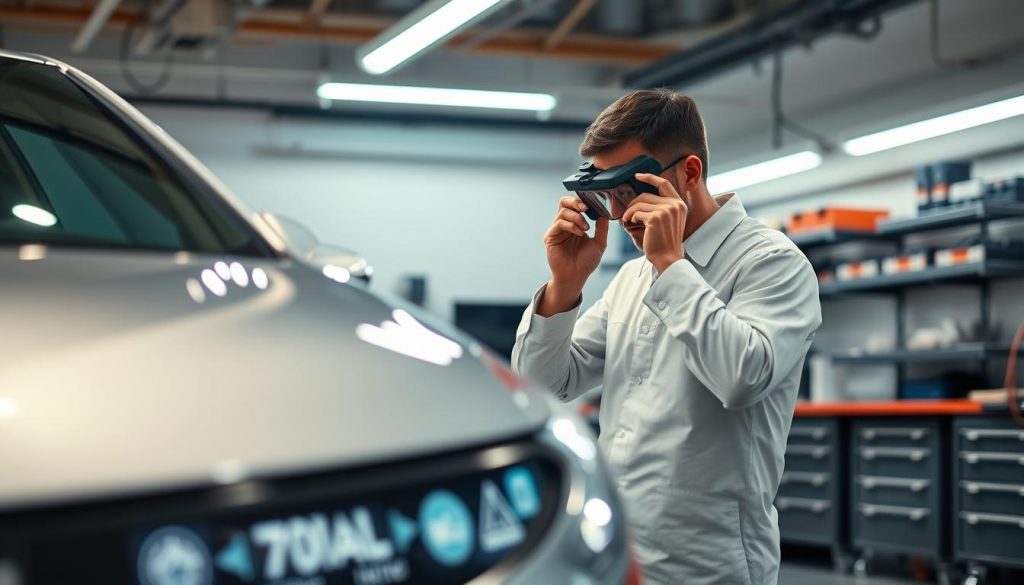
The safety features in contemporary cars, known as Advanced Driver Assistance Systems (ADAS), necessitate accurate calibration following an accident. These systems are designed to enhance vehicle safety and prevent accidents.
Critical Safety Systems Needing Precise Alignment
Several ADAS features require precise calibration to function correctly. These include:
- Automatic Emergency Braking systems, which need precise calibration to accurately detect obstacles and apply brakes at the correct moment, preventing collisions or reducing their severity.
- Lane Departure Warning and Lane Keeping Assist features, which depend on properly calibrated cameras that can precisely identify lane markings and road edges to alert drivers when they drift.
- Adaptive Cruise Control systems, which use radar sensors that must be perfectly aligned to maintain safe following distances and adjust vehicle speed appropriately in traffic.
- Blind Spot Detection systems, which rely on calibrated side-mounted sensors to accurately identify vehicles in adjacent lanes that may not be visible in mirrors.
- Forward Collision Warning, Pedestrian Detection, and Cross-Traffic Alert, which are additional critical safety features that require precise calibration after any collision repair to function as designed.
At Miracle Body and Paint Collision Center, we ensure all these vital systems are properly calibrated to manufacturer specifications after collision repairs. Our team is dedicated to ensuring your vehicle’s safety features are functioning correctly.
When ADAS Calibration Is Necessary
The accuracy of ADAS systems relies heavily on precise calibration, which is necessary after certain events. Understanding when to recalibrate these systems is crucial for maintaining vehicle safety.
Key Scenarios Requiring Recalibration
There are several instances where ADAS calibration becomes necessary. These include after a collision, windshield replacement, suspension or alignment work, and bumper repairs or replacements.
- Following any collision, regardless of severity, ADAS calibration is essential as impact forces can shift sensor positions and affect their accuracy.
- Windshield replacement necessitates recalibration since many ADAS cameras are mounted to the windshield or view the road through it.
- Suspension repairs or wheel alignments change the vehicle’s geometry and stance, requiring ADAS recalibration.
- Bumper repairs or replacements demand calibration as many proximity sensors, radar units, and cameras are housed within or behind the bumpers.
- Any time warning lights for ADAS systems appear on your dashboard, professional calibration should be performed.
By understanding these key scenarios, vehicle owners can ensure their ADAS systems are functioning correctly, maintaining the safety and integrity of their vehicle.
The Dangers of Skipping ADAS Calibration
Skipping ADAS calibration after a collision or repair can have severe consequences on vehicle safety. When ADAS calibration is neglected, it can lead to a range of issues that compromise the effectiveness of safety systems.
Risks of Uncalibrated Safety Systems
The risks associated with uncalibrated safety systems are multifaceted:
- Failure to detect obstacles or hazards, potentially leading to accidents.
- Generation of false alerts or warnings, causing driver distraction.
- Malfunctioning automatic emergency braking systems.
- Incorrect detection of lane markings by lane keeping and lane departure systems.
- Potential denial of insurance claims due to improperly maintained safety systems.
We’re driven by the alarming fact that 80% of vehicles leave shops without proper recalibration, highlighting the need for precise ADAS and calibration.
Professional ADAS Calibration San Antonio Services
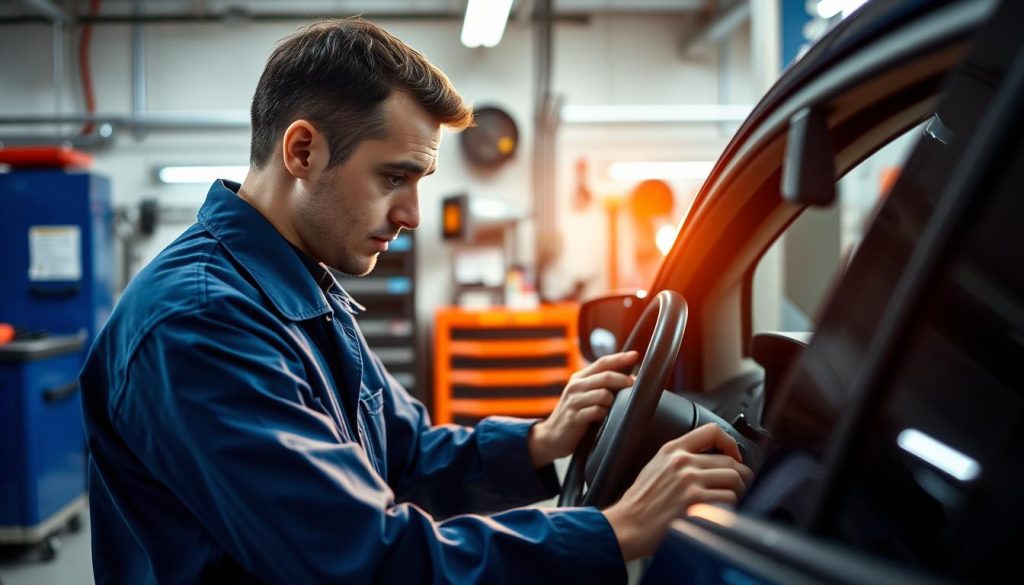
At Miracle Body and Paint Collision Center, we specialize in professional ADAS calibration services in San Antonio. Our state-of-the-art facilities in North West San Antonio (Leon Valley) and North East San Antonio are equipped with the latest technology to ensure precise calibration.
Expert Calibration in the San Antonio Area
Our expert technicians are certified in the latest ADAS calibration techniques and continuously update their training to stay current with rapidly evolving vehicle technology. We have invested in manufacturer-approved calibration tools that ensure your vehicle’s systems are restored to factory specifications.
- Professional ADAS calibration services in San Antonio require specialized equipment, manufacturer-specific software, and trained technicians to ensure precise alignment of all safety systems.
- Miracle Body and Paint Collision Center offers comprehensive ADAS calibration services at both our North West San Antonio (Leon Valley) and North East San Antonio locations.
- Our San Antonio facilities feature dedicated calibration areas with controlled lighting and precise measurement capabilities required for accurate static calibration procedures.
The ADAS Calibration Process Explained
Our technicians follow a rigorous ADAS calibration process to guarantee the accuracy and reliability of safety systems. This calibration process is crucial for ensuring that your vehicle’s advanced safety features function correctly.
Step-by-Step Calibration Procedure
The calibration process begins with an initial diagnostic scan to identify all systems requiring calibration and to document any existing fault codes or issues. Our technicians then prepare the vehicle by ensuring proper tire pressure, fuel levels, and positioning it in our specially designed calibration area.
The ADAS calibration involves two main types: static and dynamic. Static calibration involves positioning specialized targets at manufacturer-specified distances and angles from the vehicle, allowing cameras and sensors to be precisely aligned while the vehicle remains stationary.
- Static calibration involves precise alignment of cameras and sensors using specialized targets.
- Dynamic calibration requires driving the vehicle under specific conditions while calibration equipment monitors and adjusts sensor readings in real-time.
The process concludes with a final diagnostic scan to verify that all systems are properly calibrated and functioning according to manufacturer specifications. Our technicians ensure that your vehicle’s safety systems are restored to optimal performance, providing you with a reliable service.
Static vs. Dynamic Calibration Methods
The calibration process for Advanced Driver Assistance Systems (ADAS) involves two primary methods: static and dynamic calibration.
Understanding Different Calibration Techniques
Our technicians use these methods to ensure accurate ADAS functionality.
- Static calibration is performed in a controlled environment with the vehicle stationary.
- Dynamic calibration involves driving the vehicle at specific speeds while monitoring and adjusting sensor calibration in real-time.
Both methods are crucial for restoring systems to their optimal state, and our service includes determining the appropriate procedure based on the vehicle make and model.
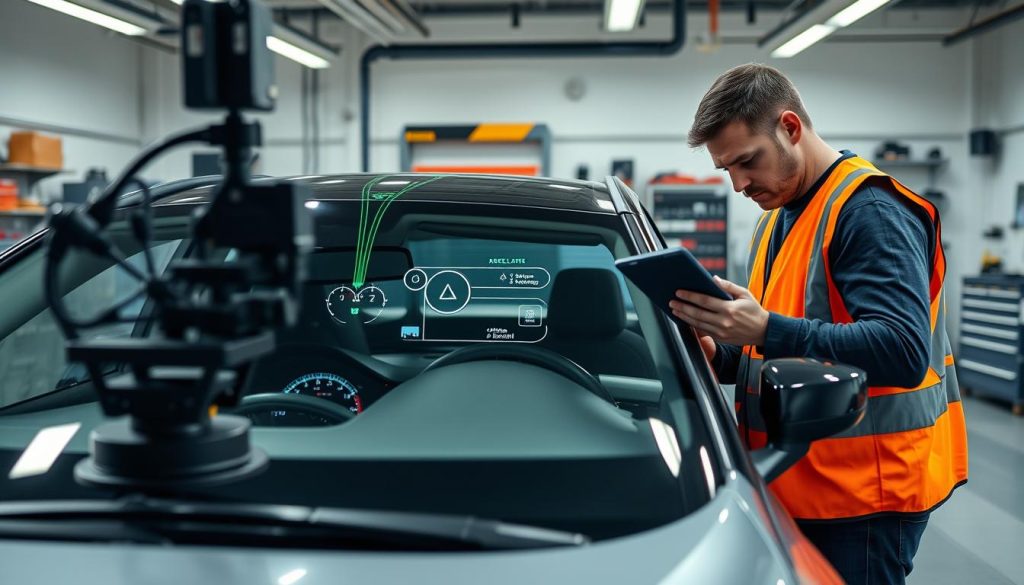
Manufacturer-Specific Calibration Requirements
Different vehicle manufacturers have distinct ADAS calibration needs. As a result, our technicians must be well-versed in the specific requirements for each vehicle make.
Brand-Specific ADAS Protocols
Each vehicle manufacturer has developed unique ADAS technologies with specific calibration requirements. For instance, Toyota and Honda vehicles often require specific target patterns and precise measurements for their Safety Sense and Honda Sensing systems, respectively.
European manufacturers like Mercedes-Benz, BMW, and Audi typically have complex calibration procedures that require specialized dealer-level equipment and software. Similarly, Ford, GM, and Chrysler vehicles each have their own proprietary calibration protocols that must be followed exactly to restore Co-Pilot360, Super Cruise, or SafetyTec systems.
- Our technicians maintain current certification and training on manufacturer-specific calibration requirements for all major vehicle brands.
- This ensures that your vehicle’s ADAS systems are restored according to exact factory specifications, guaranteeing optimal safety and performance.
The Role of Windshields in ADAS Functionality
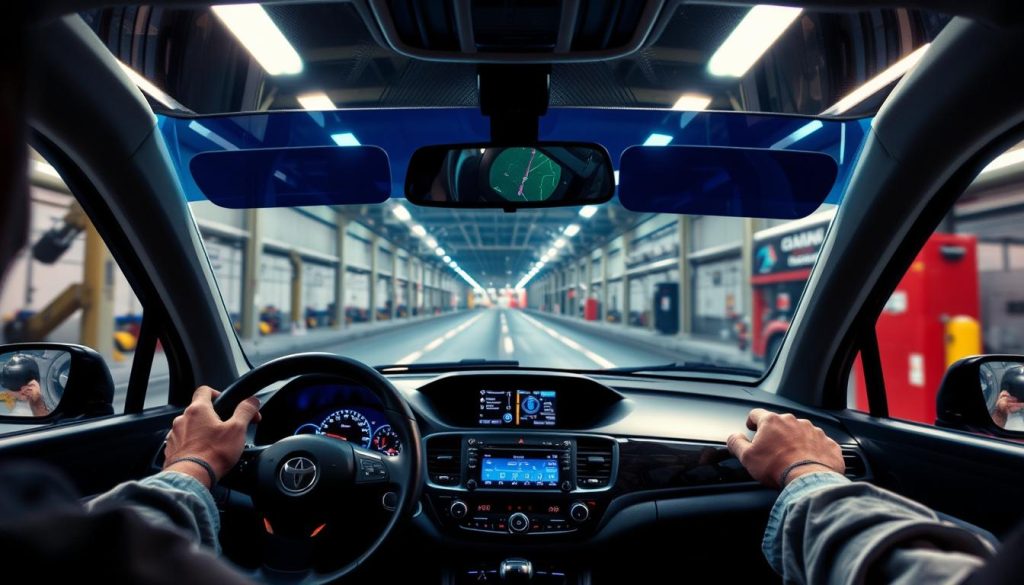
The integrity of a vehicle’s windshield is essential for the proper functioning of its ADAS cameras and sensors. Many modern vehicles have ADAS cameras and sensors mounted on the windshield, making windshield alignment crucial for these safety features to work correctly.
How Windshield Integrity Affects Safety Systems
Modern windshields serve as more than just barriers against wind and debris; they are mounting surfaces for critical ADAS cameras and sensors that require precise positioning. Many forward-facing cameras are attached directly to the windshield or view the road through specific areas of the glass with special optical properties.
- When a windshield is replaced, even minor variations in glass thickness, curvature, or mounting position can significantly affect how ADAS cameras perceive the road ahead.
- Original Equipment Manufacturer (OEM) auto glass is designed with specific optical qualities that aftermarket glass may not perfectly replicate, potentially affecting ADAS camera performance.
- Proper windshield installation followed by professional ADAS calibration is essential to ensure that all windshield-mounted safety systems function correctly after glass replacement.
Ensuring that the windshield is correctly installed and that the ADAS is properly calibrated is crucial for safety on the road. This is why it’s vital to choose a service provider that understands the intricacies of ADAS and windshield replacement.
How Long Does ADAS Calibration Take?
At Miracle Body and Paint Collision Center, we often get asked about the time required for ADAS calibration. The duration varies significantly depending on the vehicle make, model, year, and specific systems needing calibration.
Timeframes for Complete Calibration Service
- Simple calibrations for a single system might take 1-2 hours.
- Comprehensive calibration of multiple systems can take 3-4 hours or longer.
- Vehicles requiring both static and dynamic calibration will take more time to complete the process.
We prioritize accuracy over speed, ensuring each calibration is performed correctly. We also offer loaner vehicles or shuttle services for customers when calibrations require extended time, making the service as convenient as possible.
The Cost of ADAS Calibration vs. The Cost of Accidents
The expense of ADAS calibration is often compared to the potential costs of accidents. When weighing these costs, it becomes clear that investing in proper ADAS calibration is a prudent decision for vehicle owners.

Investment in Safety
Professional ADAS calibration typically ranges between $250-$600, depending on the vehicle and systems involved. This is a modest investment when compared to the potential costs of an accident caused by malfunctioning safety systems.
- The average cost of a car accident involving property damage alone exceeds $4,700.
- Accidents with injuries can cost tens or even hundreds of thousands of dollars.
- Beyond financial considerations, the human cost of accidents makes proper calibration an essential investment.
- Insurance may cover calibration costs as part of collision repair, enhancing accessibility.
When considering the potential consequences of skipping ADAS calibration, the value of this service becomes clear. Ensuring your vehicle’s safety systems function properly is crucial for your safety and the safety of others on the road.
Why Choose Miracle Body and Paint Collision Center for ADAS Calibration
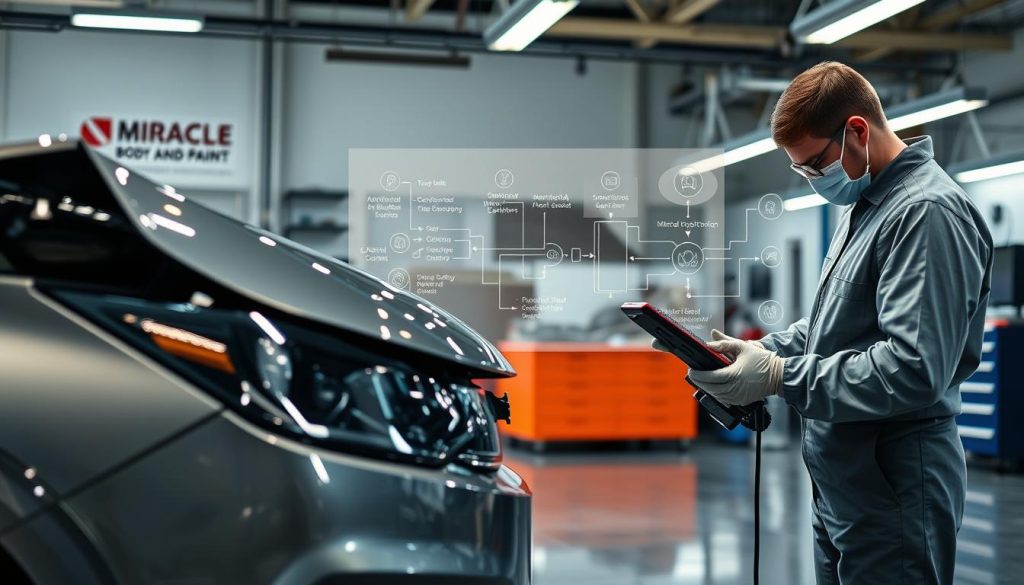
Miracle Body and Paint Collision Center stands out as a leading provider of ADAS calibration services in the San Antonio area. Our team has the expertise and equipment necessary for precise ADAS calibration.
Our ADAS Calibration Expertise
We have invested in factory-level calibration equipment and software for all major vehicle manufacturers, ensuring precise restoration of your vehicle’s safety systems. Our technicians undergo rigorous training and certification specifically in ADAS calibration.
- Extensive experience calibrating ADAS systems across virtually all vehicle makes and models available in San Antonio.
- All work is performed in-house at our two convenient San Antonio locations, maintaining quality control throughout the repair and calibration process.
- Our commitment to excellence in ADAS calibration is reflected in our perfect safety record and numerous positive reviews from satisfied customers.
Our Advanced ADAS Calibration Equipment and Techniques
With cutting-edge equipment and techniques, we ensure accurate ADAS calibration for all major vehicle brands.
State-of-the-Art Calibration Technology
Our facility is equipped with manufacturer-approved calibration equipment, ensuring precise alignment of ADAS systems to factory specifications. We utilize advanced diagnostic computers with the latest software updates to communicate with and properly calibrate increasingly sophisticated vehicle safety systems.
- Controlled lighting and level floors for accurate static calibration procedures
- Specialized targets and positioning systems designed for each manufacturer’s unique ADAS calibration requirements
- Professional-grade equipment for comprehensive calibrations of advanced driver assistance systems
Our investment in the latest technology enables us to perform precise ADAS calibration, ensuring your vehicle is safe on the road.
Conclusion: Ensuring Your Safety with Proper ADAS Calibration
To guarantee your vehicle’s safety systems are functioning correctly, professional ADAS calibration is a must. After any collision or windshield replacement, it’s crucial to have your vehicle’s Advanced Driver Assistance Systems (ADAS) recalibrated by experts. At Miracle Body and Paint Collision Center, our certified technicians use state-of-the-art equipment to ensure your vehicle’s safety features are functioning as designed. Don’t compromise on safety – contact us today to schedule your ADAS calibration service at one of our two convenient San Antonio locations.
Call us now to ensure your vehicle’s safety systems are providing the protection you and your family deserve. You can reach us at (210)680-1987 or (210)858-3630, or visit us at 6217 Grissom Rd, San Antonio, TX 78238 or 4650 Walzem Rd, San Antonio, TX 78218.

